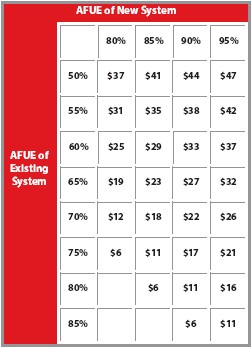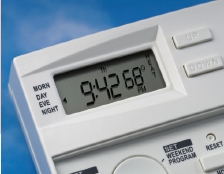Energy Rebates & Tax Credits: What Do They Mean To You?

During the current economic downturn many people are often deferring expenses. In fact, for the first time in years Americans are actually saving money instead of increasing debt. The ironic thing is, as Americans save more, some of the best deals they will ever see on durable goods abound. In addition to the auto industry, others are now offering special incentives to spur purchasing. The Heating & Air Conditioning industry is one of them.
Heating & AC Incentives: Has There Ever Been A Better Time To Buy?
The rebate trend is now helping many homeowners looking to upgrade their furnace or air conditioning efficiency. For Example:
- Bryant customers can receive a rebate up to $1,000 when they purchase a high fuel efficiency heating and cooling system
- In addition, Wisconsin’s Focus on Energy Program adds an additional $300 for a high efficiency system
- And the Federal Government has just announced that you can take a $1,500 tax credit with a qualifying system purchase
- That’s a real savings of $2,800 on a high efficiency unit!
- The tax credit is an actual $1500 straight tax reduction on your federal income tax not a proportional tax reduction
If $2800 isn’t enough, local companies can offer even more. In Dane county, Warren Heating is adding an additional $250 discount on qualifying systems which makes the total system savings $3,050.
A Win—Win Situation
The best part is, this allows you to purchase Bryant’s most efficient heating and cooling system for less than a lower energy efficient system. You save in two ways, initial purchase price and in energy consumption over the life of the unit. Truly a win-win for the consumer. Use the following table to determine exactly how much you will save.
What You Can Save
If you have an idea of how much it will cost to install a new system, use the chart to calculate how much money you are likely to save each year with a more efficient system, and what your return on investment is likely to be. Remember, if fuel prices increase, your savings increase.
1. Calculate Dollar Savings Per $100 of Annual Fuel Cost
To determine savings, find the horizontal row corresponding to the old system's Annual Fuel Utilization Efficiency (AFUE), then choose the number from that row that is in the vertical column corresponding to the new system's AFUE. That number is the projected dollar savings per hundred dollars of existing fuel bills. For example, if your present AFUE is 65% and you plan to install a high-efficiency natural gas system with an AFUE of 90%, then the projected saving is $27 per $100. If, say, your annual fuel bill is $1,300, then the total yearly savings should be about $27 x 13 = $351.

2. Calculate Return On Investment
ROI = first year savings ÷ installed cost / Example: ROI = $351 ÷ $2,500 = 0.14 = 14%








